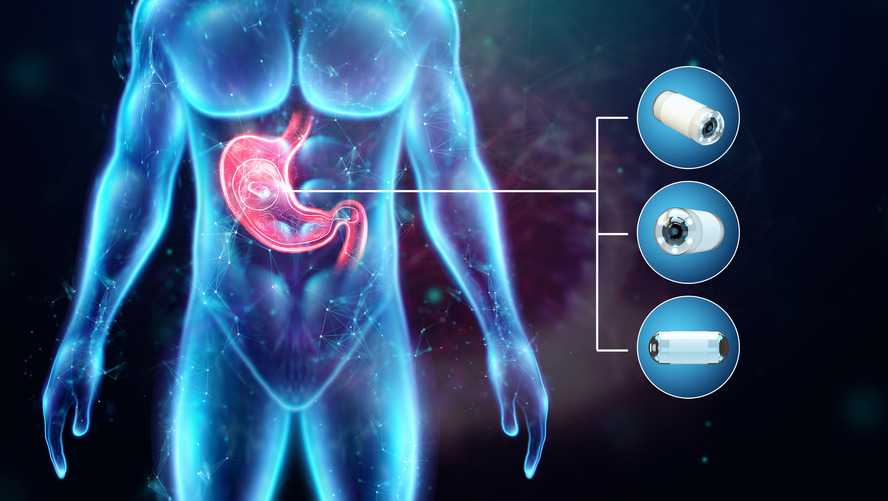
What is Advanced Endoscopy and What Are Its Methods?
Advanced endoscopy refers to advanced technology endoscopic methods used in the diagnosis and treatment of digestive system diseases. These methods allow patients to be treated without the need for surgical intervention with minimally invasive procedures. Advanced endoscopy methods include techniques such as ESD (Endoscopic Submucosal Dissection), POEM (Peroral Endoscopic Myotomy), EMR (Endoscopic Mucosal Resection) and ERCP (Endoscopic Retrograde Cholangiopancreatography). These methods are applied in a wide range of areas from polyp removal to cancer treatment, from reflux disease to obesity.
What is Advanced Endoscopy?
Advanced endoscopy refers to endoscopy techniques equipped with advanced technologies used in the diagnosis and treatment of digestive system diseases. These techniques, which can perform more comprehensive and sensitive procedures compared to traditional endoscopy methods, allow patients to be treated without the need for surgical intervention.
Conventional white light endoscopy (WLE) is the first method used during the clinical examination of gastrointestinal diseases and plays an important role in the detection of these diseases. However, it is insufficient to make a complete diagnosis because it shows a poor correlation with histopathological diagnosis.
In recent years, many advanced endoscopic methods have been developed to increase the detection accuracy of endoscopy.
What are Advanced Endoscopy Applications?
Advanced endoscopy applications include various techniques used in the diagnosis and treatment of digestive system diseases. These methods are applied in a wide range from the removal of polyps in the gastrointestinal system to the treatment of precancerous lesions.
What are the Advanced Endoscopy Treatment Methods?
Advanced endoscopy offers minimally invasive treatment methods. These methods include various techniques such as ESD, POEM, EMR and ERCP. Each method is used for the treatment of specific diseases and lesions.
ESD (Endoscopic Submucosal Dissection) Method
ESD is a procedure used to remove large polyps and early-stage cancers in the gastrointestinal tract. This technique involves carefully cutting away the submucosal layer beneath the lesion so that the entire tumor can be safely removed.
Peroral Endoscopic Myotomy (POEM) Method
POEM is a method used in the treatment of achalasia and other dysphagia diseases. This technique involves cutting and relaxing the muscles in the lower part of the esophagus, making swallowing easier.
(EMR) Endoscopic Mucosal Resection Method
EMR is a method used to remove superficial lesions and polyps in the gastrointestinal tract. This technique allows the lesion to be safely removed from the mucosal layer and allows the removal of cells that pose a risk of cancer.
Endoscopic Retrograde Cholangiopancreatography (ERCP) Method
ERCP is a method used to treat stones, obstructions and other anomalies in the bile and pancreatic ducts. This technique allows the examination and treatment of the bile ducts using an endoscope and radiographic imaging.
What are the diseases treated with advanced endoscopy?
Advanced endoscopy methods are used in the treatment of a wide range of digestive system diseases. The main diseases treated with these methods are:
- Early Stage Cancers: Methods such as ESD and EMR allow for the safe removal of early stage cancers and precancerous lesions in the gastrointestinal tract.
- Large Polyps: Large and complex polyps can be removed by endoscopic methods without the need for surgical intervention.
- Achalasia: The POEM method allows the muscles in the esophagus to be cut and relaxed, thus treating patients who have difficulty swallowing.
- Gastroesophageal Reflux Disease (GERD): Techniques such as Anti Reflux Mucosectomy (ARM) are used to reduce reflux symptoms and control the disease.
- Obesity: Endoscopic Sleeve Gastroplasty and Endoscopic Gastric Balloon are minimally invasive methods used in the treatment of obesity. These techniques reduce the volume of the stomach, allowing patients to lose weight.
- Gallstone Diseases: The ERCP method is used in the treatment of stones and obstructions in the bile and pancreatic ducts.
- Pancreatitis: ERCP is effective in treating obstructions and bile duct problems caused by pancreatitis.
These advanced endoscopy methods offer patients minimally invasive treatment options, providing a rapid recovery process and low risk of complications.
Which Surgeries Are Most Commonly Performed with Advanced Endoscopy?
The most common advanced endoscopic surgeries include polyp and tumor removal with ESD, achalasia treatment with POEM, gallstone removal with ERCP, and endoscopic gastric balloon placement. These surgeries allow patients to recover quickly and return to their daily lives.
Anti Reflux Mucosectomy (ARM)
ARM is an endoscopic method used in the treatment of gastroesophageal reflux disease. This technique allows the removal of the mucosal layer of the esophagus to prevent the stomach contents from escaping into the esophagus.
Endoscopic Sleeve Gastroplasty
Endoscopic Sleeve Gastroplasty is a minimally invasive method used in the treatment of obesity. This technique involves stitching the inside of the stomach to reduce its volume and therefore reduce food intake.
Endoscopic Gastric Balloon
Endoscopic gastric balloon is a temporary treatment method for patients who want to lose weight. In this technique, a balloon is placed in the stomach to reduce the volume of the stomach and allow patients to feel full with less food. The balloon usually remains in the stomach for a period of 6 months to 1 year and is then removed.

